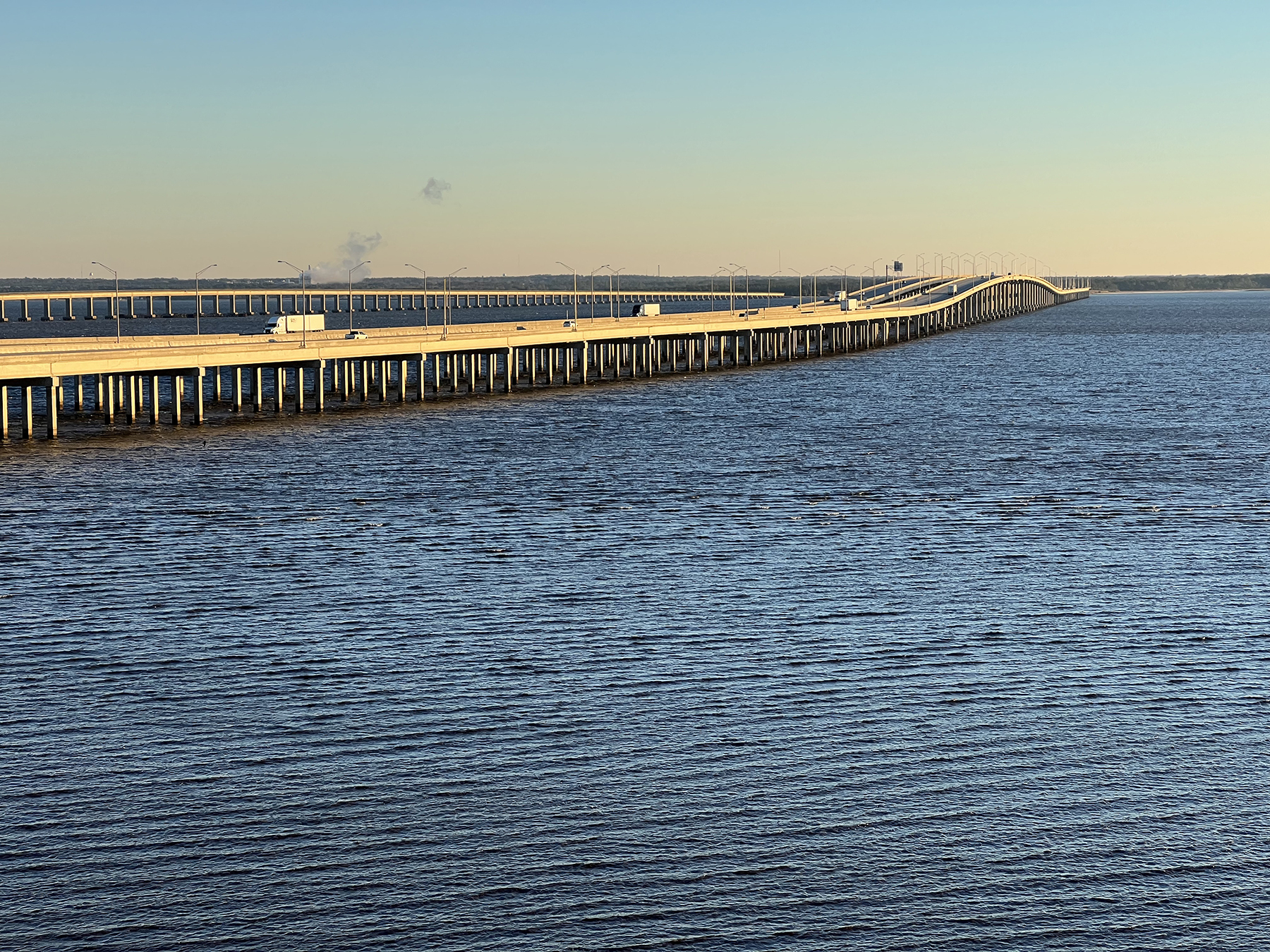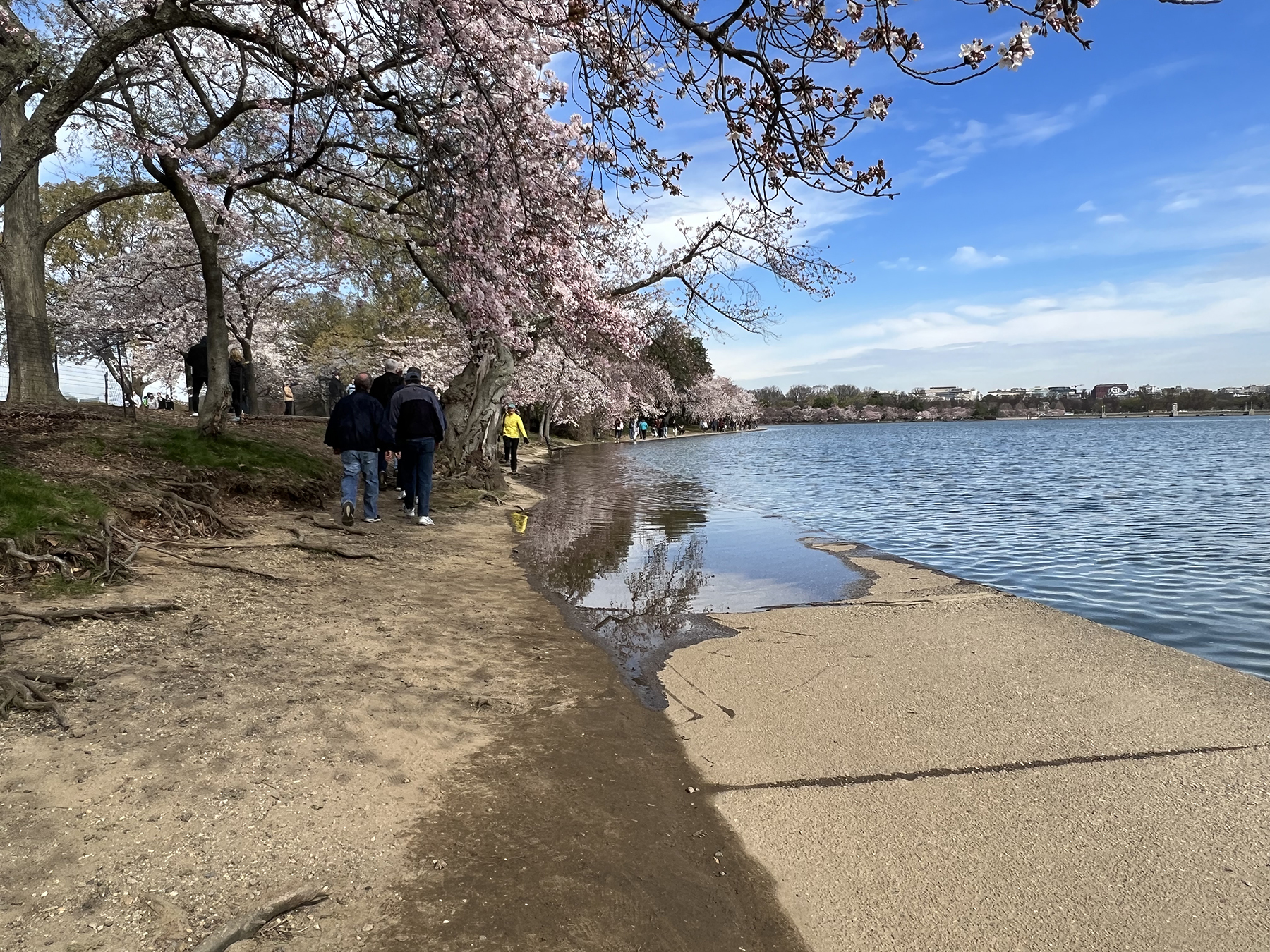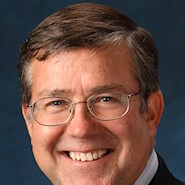By Scott L. Douglass, Ph.D., P.E., BCCE, M. ASCE
Civil engineers want to design in climate-sensitive ways, and a fundamental question is how much sea-level rise should be accounted for in the design of coastal infrastructure today. Some Federal Highway Administration guidance provides quantitative answers to that question.
Long-term sea-level rise is making our coastal infrastructure more vulnerable during extreme events. Major storms approach coasts on higher sea levels, meaning the flooding, waves, and damage are somewhat greater. In 2004, the former Interstate 10 bridge in Pensacola, Florida, was severely damaged by waves riding on the storm surge of Hurricane Ivan. In the decades leading up to the storm, sea level rose enough to cause an additional 70,000 pounds of wave-induced uplift on the bridge decks that night, magnifying the damage.
So, sea-level rise has already contributed to the damage of one major U.S. bridge during an extreme event.

Sea-level rise is also causing increased flooding along coasts. It goes by a lot of names: “nuisance flooding,” “high-tide flooding,” “sunny day flooding,” “storm tide flooding,” and “king tide flooding.” As sea levels rise, these low areas will flood more frequently and deeper. This is happening in every coastal state, and civil engineers are being asked to address the problem.

The causes of global mean sea-level rise are the melting of the land-based ice sheets of Antarctica and Greenland, thermal expansion of the ocean’s waters as they warm, and to a lesser extent, several other phenomena. The rate of sea-level rise is increasing. This acceleration is found even in the longest tide gauge records around the world.
The causes of relative sea-level rise, relative to the land elevation at any location, are the global rise plus vertical land movement, including subsidence, glacial rebound, and plate tectonics. There are other, smaller components of relative sea-level rise, including long-term changes in oceanic currents and wind fields and changes in gravitational fields related to the melting of the ice sheets, which affect the worldwide distribution of the ocean’s waters.
Oceanography and climate modeling produce projections of future sea-level rise.
The Intergovernmental Panel on Climate Change presents projections for the next several decades and centuries that sum up the contributions of each process, for example, the contribution from the Greenland component, the Antarctica component, the thermal expansion component, etc. These projections have scientific uncertainty and uncertainty about the input assumptions concerning future emissions of greenhouse gases by society. U.S. government agencies, primarily the National Oceanic and Atmospheric Administration, produce estimates of future relative sea-level rise values in terms of arbitrarily spaced “scenarios” that span the range of scientific plausibility.
The issue is the proper interface between the science and the engineering design decisions.
A design philosophy used in many technical calculations in water resources (e.g., Manning’s Equation, the rational method, runoff regression equations) is to use our best estimate and then be sure we understand the uncertainty to develop a conservative design.
The FHWA’s “Highways in the Coastal Environment,” Hydraulic Engineering Circular No. 25, third edition, outlines three sea-level rise considerations that are appropriate for all coastal infrastructure design:
- The projections of future relative sea-level rise should be used in design. It is an expected design condition, and the inherent assumption of an increased rate of rise this century is justified as the use of the best available science. The climate models underpinning these projections show some skill at modeling sea-level rise.
- We should be using at least the relative sea-level rise at a project location, corresponding to a global rise of about 2 ft by the end of this century. These values generally correspond to the median of the process-based projections for the intermediate greenhouse gas emissions inputs.
- Engineers should be aware of the uncertainty in future sea-level rise projections and account for it appropriately in design. Higher values of relative sea-level rise can and should be considered when designing high-value, long-lived infrastructure that is sensitive to sea levels. Relative sea-level rise projections that reach about 4 ft of global rise by the end of this century are one possible set of higher values for consideration. These higher values generally correspond to the upper 95th percentile of the highest greenhouse gas emissions inputs.
Note that the recommendation is for the relative sea-level rise corresponding to these global rise numbers. Thus, at many places these minimums will be more than 2 ft of rise by the end of the century. The minimum varies from less than 1 ft to, in some places, over 3 ft this century, depending on location.
The science will continue to evolve and improve. But the philosophy of using expected values as minimums for design while accounting appropriately for the range of uncertainty will continue to be an appropriate way to make the connection between the science and the engineering design. The FHWA expects that future editions of HEC-25 will update these sea-level rise considerations over time in accordance with the best available science.
Bottom line: This is an important “work area ahead,” figuring how to adapt our coastal infrastructure to future sea levels.
Scott L. Douglass, Ph.D., P.E., BCCE, M. ASCE, is the president of South Coast Engineers.
This article is published by Civil Engineering Online. It is based on a conference paper, “Incorporating Sea Level Rise in Coastal Infrastructure Design,” presented at the 2023 ASCE INSPIRE Conference.
The content provided in this article is for general informational purposes only.



